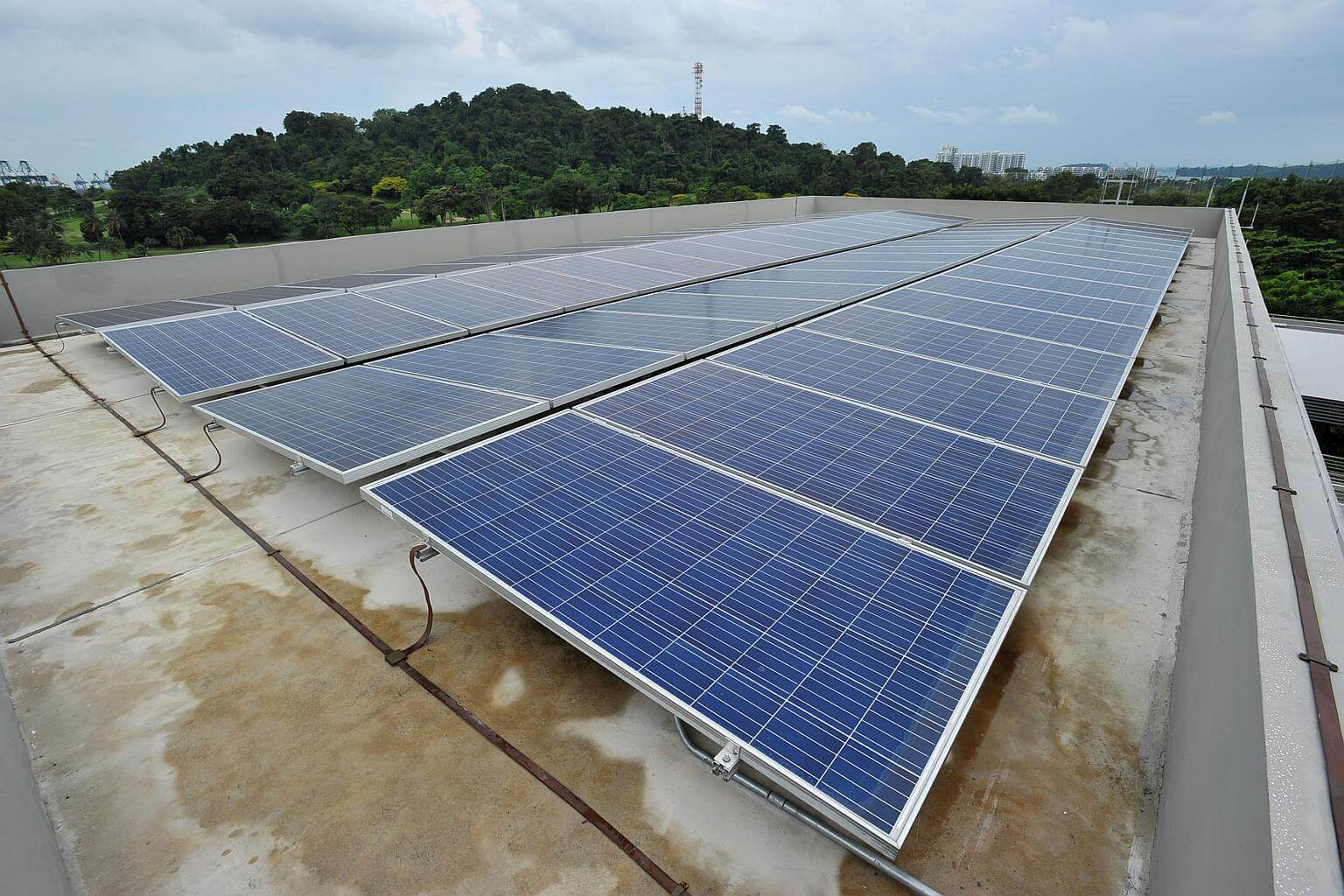Spike in number of solar panel installations
Experts say Singapore is on track to having solar energy meet 5% of its power needs by 2020
Sign up now: Get ST's newsletters delivered to your inbox

Solar panels on the rooftop of the Sentosa Fire Station supplies enough electricity to meet at least six per cent of the station's total energy consumption.
PHOTO: ST FILE
Carolyn Khew
Follow topic:
The sun is now meeting the electricity needs of the equivalent of 26,000 four-room HDB flats, for over a year, in Singapore.
There has been a sharp rise in the number of solar panel installations in the first half of this year, bringing the total to 1,409. This is almost double that a year ago.
In 2008, when the Government started test-bedding solar panels on HDB blocks, there were just 30 solar panel installations.
Experts say solar energy now accounts for 1.5 per cent of Singapore's total electricity needs, or about 100 megawatt peak (MWp).
It is on track to meeting the government target of 5 per cent by 2020.
The hope is that solar energy will help to reduce Singapore's reliance on natural gas, which meets 95 per cent of its electricity needs.
Other viable alternative fuel sources - namely, nuclear - remain controversial though the Government has not ruled it out. The wind speed here is not sufficient to produce energy and Singapore does not have river systems with fast-flowing water throughout the year.
Nanyang Technological Univer- sity's Energy Research Institute executive director Subodh Mhaisalkar said the pace of solar panel installations this year has been "rapid".
"Even though the cost of fossil fuels has dropped significantly, the continuing cost reductions and increased efficiency of solar panels continue to strengthen the viability of solar cell installations," he said. "The target of 350MWp (by 2020) is definitely within reach."
New and larger installations, such as at Jurong Port with a successful completion of a 9.5MWp solar energy generation facility, substantially contributed to the progress this year, said the Energy Market Authority (EMA).
Currently, non-residential users contribute to the bulk of solar energy here. This includes the HDB, now the largest player in the installation of solar panels in Singapore.
By the end of this year, there will be about 900 HDB blocks installed with solar panels. This is more than double the 400 blocks installed with solar panels last year, said the HDB and the Economic Development Board in a statement yesterday.
Towns where solar panels were recently installed include Tampines, Sembawang and Marine Parade. The solar energy is used to power common amenities such as lifts and lighting in common areas.
Other sites, including Bishan Fire Station and the new Prisons headquarters, are expected to be fitted with solar panels by 2019.
Over the years, the non-residential sector has experienced faster solar adoption than the residential sector comprising private homes, said the EMA.
Cost remains one of the obstacles, said Dr Stephen Tay, head of the National Solarisation Centre at the Solar Energy Research Institute of Singapore. "Due to economies of scale, large rooftop systems can be installed at lower cost and, hence, are more economical compared with smaller systems," he said.
Nonetheless, he is optimistic that residential users will start to tap solar energy as the cost of solar panels is expected to drop further.
To encourage the adoption of solar energy, the EMA is also looking at research and development to address challenges such as cloud cover.

